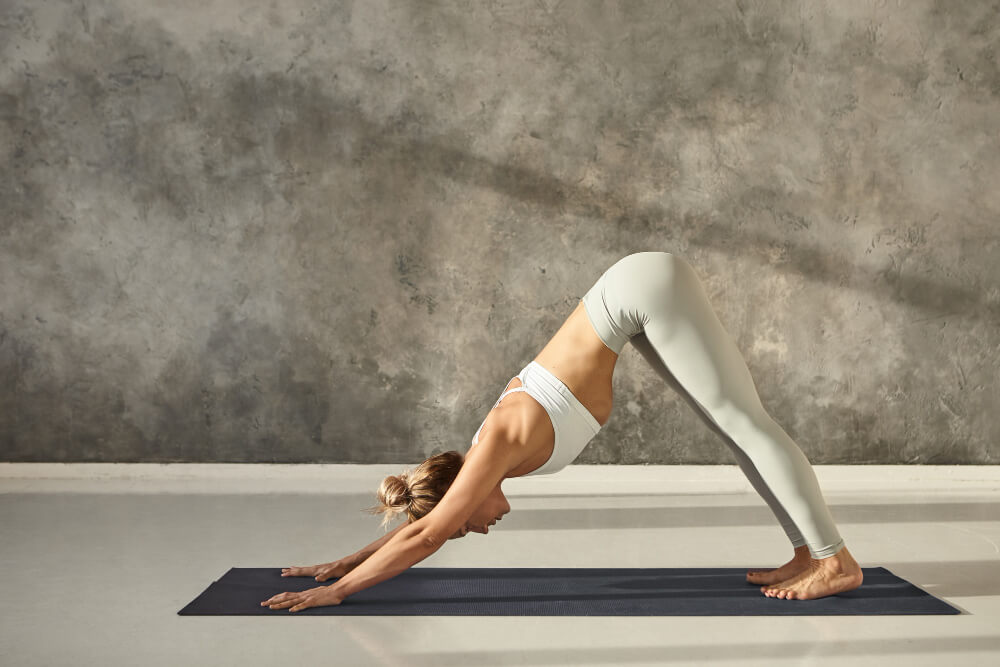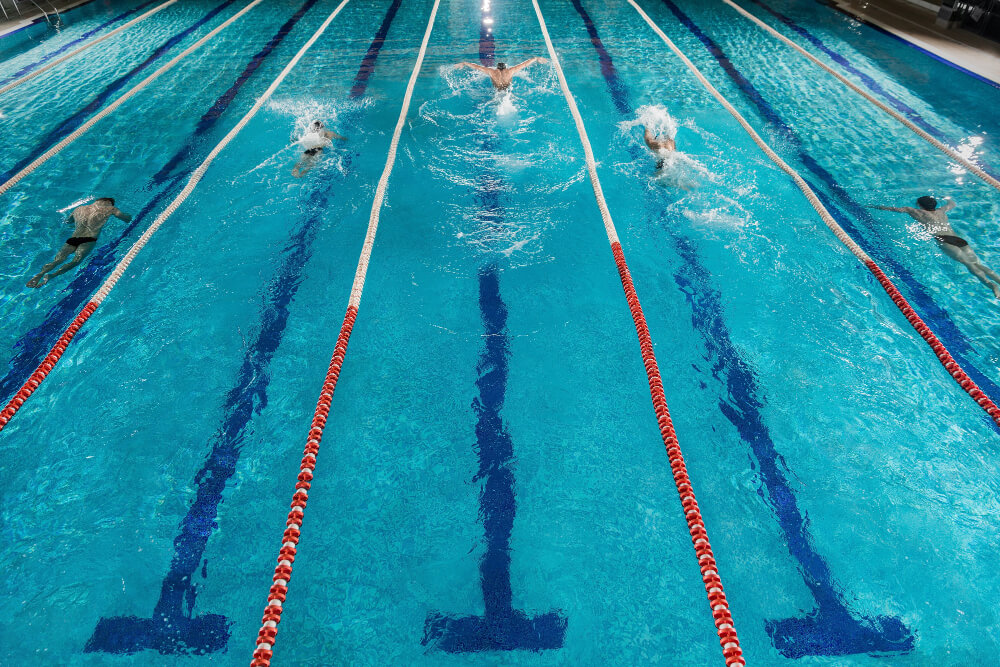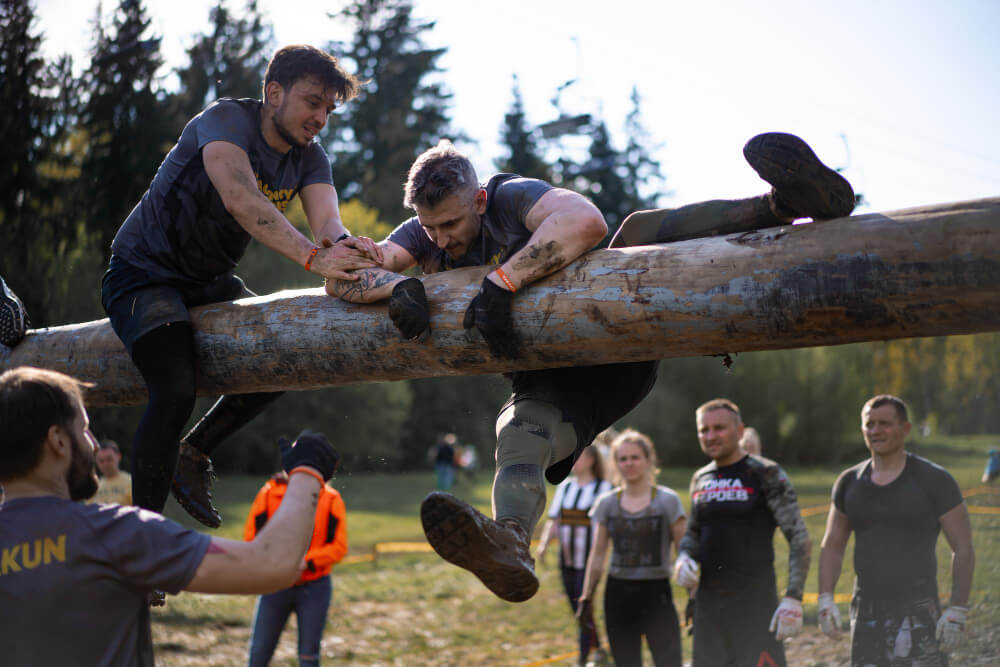As a personal trainer, the great outdoors can be an invaluable resource.
Fun outdoor personal training ideas not only give your clients a breath of fresh air but also add variety to your sessions. This variety can be the extra motivation they need to achieve their fitness goals.
Whether you're seeking exercises with minimal equipment or creative alternatives to the usual gym environment, we have some inspiring ideas to make your next outdoor training session more exciting.
Here are eight outdoor personal training ideas for inspiration.
#1: Outdoor Personal Training Ideas using a bench.
An outdoor bench is an incredibly useful item for personal trainers and group fitness classes. It offers a versatile tool for constructing full-body exercises without the need for additional equipment.
The best part is that benches are widely accessible in various outdoor spaces, making them convenient no matter where you train.
Utilising a bench in your clients' outdoor personal training sessions can yield multiple benefits. It not only helps to improve coordination and flexibility but also allows you to address any muscular imbalances they might have.
Incorporating unilateral exercises starting from their weaker side can be effective in this regard.
Here are some exercises using a bench in your outdoor training program:
- Step-ups: Step onto the bench with one foot and bring the other knee up, then alternate legs.
- Trench dips: Position yourself with your back to the bench, place your hands on the bench behind you, and dip down, then push back up.
- Elevated push-ups on a pike: Assume a push-up position with your feet on the bench and perform push-ups.
- Decline push-ups: Place your feet on the bench and your hands on the ground, then perform push-ups.
- Box jumps: Jump onto the bench from a standing position and step back down.
- V-crunches: Sit on the bench, lean back slightly, lift your legs, and perform crunches while balancing on the bench.
By incorporating these bench exercises into your outdoor training sessions, you can add a new dimension of challenge and variety for your clients. This will help them stay motivated and progress towards their fitness goals effectively.
Here are some outdoor personal training ideas incorporating a bench into your personal training sessions or group fitness classes:
- Bench Relay Races: Divide your clients into teams and set up a relay race circuit using the bench. Each team member must perform a specific exercise on the bench (e.g., step-ups, trench dips, or V-crunches) before tagging the next teammate to continue the race.
- Bench HIIT Circuit: Design a high-intensity interval training (HIIT) circuit that includes various exercises using the bench, such as box jumps, elevated push-ups, and bench dips. Set a timer for each exercise and let your clients rotate through the circuit, maximizing their effort during the work intervals.
- Partner Bench Exercises: Have clients work in pairs, where one person performs an exercise on the bench while the other provides resistance or assistance. For example, one person could do elevated push-ups while their partner places their hands on their back, providing some resistance.
- Bench Yoga: Incorporate yoga poses and stretches using the bench to challenge balance and flexibility. For instance, perform single-leg balances or modified pigeon stretches with one foot on the bench.
- Bench Bootcamp: Create a bootcamp-style workout using the bench as the central station for various exercises. Include bodyweight movements like mountain climbers, step-ups, and bench jumps, combined with cardio exercises like running or jumping jacks.
- Bench Circuits: Set up stations around the outdoor area, with each station featuring a different exercise using the bench. Clients move from one station to another, performing each exercise for a set amount of time before rotating to the next one.
- Bench Games: Turn your workout into a friendly competition with bench-based bootcamp games. For example, challenge your clients to see who can do the most step-ups or bench jumps in a given time frame.
- Bench Stretching: Use the bench as a prop for stretching exercises at the end of the session. Incorporate dynamic stretches, like leg swings or arm circles, to help improve flexibility and range of motion.
- Remember to prioritise safety and proper form during these fun activities. With these exciting ideas, your clients will not only enjoy their outdoor training but also stay motivated to keep coming back for more!
#2: Outdoor Personal Training Ideas Using Trail Running
For clients who have a penchant for running and cardiovascular activities, trail running presents an ideal outdoor workout option.
Beyond being a great way to break away from the monotony of road running, trail running offers the chance to immerse oneself in a more tranquil and picturesque environment.
Notably, this type of running engages additional muscle groups, such as the quadriceps, glutes, and core, especially when tackling steep and uneven terrains.
Trail running provides a unique challenge compared to running on a treadmill or paved surfaces. The varied and ever-changing nature of the trail demands constant adjustments in stride, foot placement, and balance.
As a result, the body undergoes more dynamic movements, working on stabilising muscles that might not be fully activated during traditional road running.
To optimise the trail running experience for your clients, consider incorporating the following tips and drills:
- Start Gradually: If your clients are new to trail running, encourage them to start with shorter and less technical trails. Gradually increase the difficulty as their fitness and confidence improve.
- Proper Footwear: Advise your clients to invest in trail-specific running shoes. These shoes offer better traction, stability, and protection against rough terrain and obstacles.
- Focus on Form: Emphasize maintaining an upright posture and a slightly shorter stride. Encourage them to keep their eyes on the trail ahead to anticipate obstacles.
- Incorporate Hill Training: Include uphill and downhill running drills to simulate the varying elevations they'll encounter on trails. Uphill running builds strength, while downhill running hones control and balance.
- Interval Training: Integrate interval training on the trails to improve cardiovascular endurance and adapt to the shifting demands of the terrain.
- Mind the Surface: Remind your clients to be mindful of the trail surface. Roots, rocks, and loose gravel can pose tripping hazards, so they should stay focused and choose their steps wisely.
- Bring Water and Snacks: Depending on the length of the trail run, recommend that clients carry water and energy-rich snacks to stay hydrated and fueled during the run.
- Cool Down and Stretch: After the trail run, lead your clients through a cool down and stretching routine to promote recovery and prevent muscle tightness.
- Safety First: Advise them to inform someone about their trail running plans, especially if running alone, and carry a phone or GPS device in case they get lost.
- Explore New Trails: Encourage your clients to explore different trails regularly. Exploring new routes keeps the experience fresh and exciting while exposing them to varying levels of difficulty
Trail running not only offers an effective cardiovascular workout but also provides a mental escape from the urban environment
As you have seen so far, coming up with outdoor personal training ideas can be so much more than taking a normal class. Now and again you've got to get creative and add something new.
#3: Take Your Outdoor Personal Training To The Next Level With Fun Skipping Drills
Skipping is indeed a highly effective and versatile activity that we highly recommend for outdoor personal training sessions due to its convenience in terms of time, space, and cost.
It offers a fantastic all-around workout, engaging various muscle groups and providing excellent cardiovascular benefits.
Here are five outdoor personal training ideas using skipping that you can incorporate into your workouts for more skill and variety.
- Interval Skipping: Alternate between periods of fast-paced skipping and slower, recovery-paced skipping. For example, skip at a high intensity for 30 seconds, followed by 30 seconds of slower skipping. Repeat this pattern for several sets to challenge cardiovascular endurance and burn more calories.
- Skipping HIIT Circuit: Design a High-Intensity Interval Training (HIIT) circuit that includes skipping and bodyweight exercises. Combine skipping with exercises like squats, push-ups, burpees, or lunges. Perform each exercise for a set amount of time, then switch to skipping for a short burst before moving on to the next exercise.
- Skipping Pyramid: Create a pyramid workout with skipping intervals. Start with 30 seconds of skipping, then rest for 15 seconds. Increase the skipping time by 10 seconds for each subsequent set (e.g., 40 seconds, 50 seconds), with 15 seconds of rest between each set. Once you reach the peak (e.g., 60 seconds of skipping), work your way back down the pyramid.
- Partner Skipping Challenges: Pair up clients and have them do partner-skipping challenges. For example, they can skip together in sync or take turns performing specific skipping tricks or patterns while the other counts the number of repetitions.
Skipping for Agility and Footwork: Set up an agility ladder or cones in a designated area and have clients perform skipping drills through the obstacles. This helps improve coordination, balance, and footwork while adding a fun and challenging element to the workout.
To ensure your clients get the most out of their skipping workouts, consider the following additional tips:
- Proper Form: Instruct your clients to maintain proper skipping form with a relaxed grip on the handles and use the wrists to rotate the rope, not the arms.
- Warm-up and Cool-down: Always begin the skipping session with a dynamic warm-up and end with a cool-down and stretching routine to prevent injuries and aid recovery.
- Progressive Training: As your clients' skipping skills improve, progressively increase the intensity, duration, and complexity of the skipping drills to continue challenging their fitness levels.
- Incorporate Rest Days: Allow sufficient rest days between intense skipping sessions to give the feet and ankles time to recover and reduce the risk of overuse injuries.
By incorporating these dynamic skipping workouts and adhering to proper training principles, your clients can experience improved strength, agility, coordination, and cardiovascular fitness while enjoying their outdoor personal training sessions to the fullest.
#4: Outdoor Personal Training Ideas Using A Sand Bag
Sandbag workouts are a hidden gem in fitness routines, often overlooked by clients who mistakenly associate them solely with military, police, or special forces training.
However, sandbags offer unique benefits due to their constantly shifting centre of mass caused by the sand inside.
This instability sets them apart from traditional barbells or dumbbells, making them an excellent tool for improving balance and coordination.
At first, clients may find it challenging to manage the dynamic nature of the sandbag's weight distribution.
However, by embracing this challenge and shifting the burden away from their centre of gravity, they can improve their ability to maintain balance, leading to long-term benefits for their overall stability.
One of the key advantages of using a sandbag is its ability to engage multiple muscle groups during exercises.
The unstable nature of the weight demands coordination and control, requiring various muscles to work together cohesively.
This full-body engagement enhances total-body strength and functional fitness.
Now, let's explore five outdoor personal training ideas using a sandbag that you can incorporate into your clients' outdoor personal training sessions:
- Sandbag Squat and Press: Begin with the sandbag at shoulder height, perform a squat, and then explode upwards into an overhead press. Lower the sandbag back to shoulder level and repeat.
- Sandbag Deadlift to Bent-Over Row: Perform a deadlift with the sandbag, and once standing upright, transition into a bent-over row by pulling the sandbag towards the chest. Lower it back down with control and repeat the sequence.
- Sandbag Clean and Press: Start with the sandbag on the ground, perform a clean (lifting the sandbag to shoulder height), and follow it with an overhead press. Lower the sandbag back down and repeat.
- Sandbag Bear Hug Lunges: Hold the sandbag close to the chest with both hands (bear hug position) and step forward into a lunge. Alternate legs and continue lunging, maintaining control of the sandbag.
- Sandbag Push-Ups: Place the sandbag on the ground and perform push-ups with hands gripping the sandbag handles. The unstable surface will challenge core stability and engage additional muscles during the exercise.
When incorporating sandbag workouts into your clients' outdoor training, consider programming them into circuits for a comprehensive and challenging routine.
For clients primarily interested in strength training, you can gradually increase the load, reps, or volume of the sandbag exercises to progress their strength development.
Remember to prioritise proper form and technique, especially when dealing with an unstable weight like the sandbag.
As your clients embrace these amazing sandbag workouts, they will discover a fresh and effective dimension to their fitness routine, fostering strength, balance, and coordination in a fun and rewarding manner.
#5: Include Yoga In Your Warm-Down Routine
Yoga is an excellent choice for a warm-down routine after a workout or physical activity. It offers numerous benefits that complement the body's recovery process and promote overall well-being.
Some of the key advantages of incorporating yoga as a warm-down routine include:
- Muscle Relaxation: Yoga poses typically involve gentle stretching and lengthening of muscles. This helps to release tension and tightness in the muscles, promoting relaxation and reducing post-workout soreness.
- Increased Flexibility: Regular yoga practice can enhance flexibility, which is essential for maintaining a full range of motion in the joints. Improved flexibility can also reduce the risk of injuries during future workouts.
- Enhanced Circulation: Yoga encourages mindful breathing, which can improve blood circulation and oxygen delivery to the muscles. This aids in the removal of waste products from the muscles, facilitating a quicker recovery.
- Stress Reduction: Yoga incorporates relaxation techniques and mindfulness, helping to lower stress levels and promote mental relaxation. A calming warm-down routine can be beneficial for both physical and mental recovery.
Improved Posture: Many yoga poses focus on alignment and core engagement, which can help improve posture and prevent muscular imbalances.
Now, let's suggest some simple and effective outdoor personal training ideas using Yoga as part of a warm-down routine.
- Child's Pose (Balasana): Begin in a kneeling position, sit back on your heels, and reach your arms forward while lowering your chest towards the ground. Hold for 1-2 minutes, focusing on deep breathing and relaxation.
- Cat-Cow Stretch: Move to a tabletop position with hands and knees on the ground. Inhale and arch your back, lifting your head and tailbone (Cow Pose), then exhale and round your back, tucking your chin (Cat Pose). Repeat for 6-8 rounds.
- Downward Facing Dog (Adho Mukha Svanasana): From tabletop position, lift your hips up and back, forming an inverted V-shape with your body. Press your palms into the ground and press your heels towards the floor. Hold for 1 minute, focusing on stretching the back and hamstrings.
- Low Lunge (Anjaneyasana): Step one foot forward between your hands and lower your back knee to the ground. Lift your chest and reach your arms overhead. Hold for 30 seconds on each side to stretch the hip flexors and quadriceps.
- Seated Forward Bend (Paschimottanasana): Sit with your legs extended in front of you and reach your arms towards your feet. Lengthen your spine and hinge from the hips to fold forward. Hold for 1-2 minutes, focusing on breathing deeply and relaxing into the stretch.
- Corpse Pose (Savasana): Lie on your back with arms and legs extended. Close your eyes and relax your entire body. Stay in this pose for 5-10 minutes to allow your body to absorb the benefits of the practice.
Remember to adjust the routine based on your client's needs and physical abilities. Encourage them to focus on breathing deeply throughout the warm-down to maximise its benefits.
Incorporating this yoga routine regularly can significantly enhance their recovery, flexibility, and overall well-being.
#6: Add Swimming To Your Outdoor Personal Training And Train Your Clients For An Event
When you think of outdoor personal training ideas, the last thing on your mind is taking your clients for a swim. But hear me out.
Swimming is an exceptional full-body workout that can be enjoyed in a pool or a natural body of water like a lake.
When you swim, nearly every muscle in your body comes into play, working harmoniously to keep you afloat and propel you through the water.
This makes swimming a fantastic choice for toning and strengthening various muscle groups, especially in the upper body.
As you swim, your lats, traps, chest, and arms are engaged, contributing to a sculpted and toned appearance.
Another notable benefit of swimming is its positive impact on abdominal muscles. The rhythmic motion of swimming activates and strengthens the core muscles, providing a solid foundation for overall body stability and athletic performance.
You can use this advantage to attract clients who seek to improve their core strength and posture.
Beyond its muscle-toning benefits, swimming is an excellent cardiovascular workout. Engaging in regular swimming sessions challenges your heart and lungs, leading to improved cardiovascular health.
The combination of increased heart rate and sustained breathing during swimming helps burn calories and contributes to overall fat burning, promoting weight management and a healthier lifestyle.
For clients interested in participating in a swimming race or competition, here are some key steps and training tips to guide them:
- Assess Current Skill Level: Determine your clients' current swimming abilities, including their comfort in the water, stroke proficiency, and endurance level. This assessment will help you design a suitable training plan tailored to their individual needs.
- Establish Goals: Work with your clients to set specific and achievable goals for the swimming race. Whether it's completing a certain distance or improving their race time, having clear objectives will keep them motivated throughout the training process.
- Gradual Progression: Design a progressive training program that gradually increases the distance and intensity of their swimming sessions. Include a mix of swimming drills, intervals, and endurance sets to build both speed and stamina.
- Stroke Technique: Focus on refining their swimming technique to optimise efficiency and reduce the risk of injury. Proper stroke mechanics can significantly impact their performance in the race.
- Interval Training: Incorporate interval training into their workouts to simulate race conditions and improve speed. For example, they can do short sprints followed by active recovery periods.
- Open Water Practice: If the race takes place in a lake or ocean, plan some open water practice sessions to acclimate your clients to the unique challenges of swimming in natural environments, such as dealing with currents and navigation.
- Rest and Recovery: Ensure they have sufficient rest and recovery days in their training schedule to prevent overtraining and reduce the risk of injury.
Nutrition and Hydration: Educate your clients on proper nutrition and hydration to fuel their swimming workouts and optimise their race-day performance.
Remember that swimming is a skill-based sport, and consistent practice is key to improvement.
#7: Outdoor Personal Training Ideas And Obstacle Races
Outdoor personal training provides a fantastic opportunity to prepare clients for obstacle races like the Spartan Race.
These races require a unique combination of strength, endurance, agility, and mental fortitude to conquer various challenges and obstacles spread across rugged terrains.
Training outdoors allows clients to simulate race conditions, experience different environments, and develop the necessary skills to overcome the obstacles they'll encounter during the race.
Here are some outdoor personal training ideas and drills tailored for Spartan Race preparation:
- Trail Running and Hill Sprints: Incorporate trail running sessions to build cardiovascular endurance and adaptability to uneven terrain. Hill sprints help develop leg strength and power, which is essential for tackling inclines and challenging obstacles.
- Circuit Training with Obstacle Replicas: Set up a circuit that mimics common Spartan Race obstacles. Include exercises like rope climbs, monkey bars (or playground bars), wall jumps, and sandbag carries. Clients rotate through the circuit to develop the specific skills required for each obstacle.
- Functional Strength Training: Utilize bodyweight exercises and functional training tools like resistance bands, kettlebells, and medicine balls to improve overall strength, stability, and core engagement. These exercises mimic the movements needed to conquer various obstacles during the race.
- Team Workouts: Organize group training sessions where clients work together to complete partner exercises or team challenges. This fosters camaraderie and prepares them for the collaborative nature of certain Spartan Race obstacles.
- Balance and Agility Drills: Incorporate drills that improve balance and agility, such as single-leg exercises, ladder drills, and balance beam walks. These exercises help clients navigate tricky terrain and maintain stability during obstacles.
- Rope Climbing and Cargo Net Practice: Find suitable spots with ropes or cargo nets for clients to practice ascending and descending. This builds upper body and grip strength needed for challenges like rope climbs and cargo net crossings.
- Burpees and HIIT Workouts: The Spartan Race often penalizes failed obstacles with burpees. Incorporate burpees and high-intensity interval training (HIIT) to improve cardiovascular conditioning and mental resilience.
Training Plan Sample (12 weeks):
Week 1-4 (Building Base):
- Trail runs (3-4 days per week) with gradually increasing distances.
- Functional strength training with bodyweight exercises (2-3 days per week).
- Hill sprints (1-2 days per week).
- Balance and agility drills (1-2 days per week).
Week 5-8 (Obstacle-Specific Training):
- Circuit training with obstacle replicas (2 days per week).
- Team workouts for collaboration and communication (1 day per week).
- Rope climbing and cargo net practice (1-2 days per week).
- HIIT workouts with burpees (1-2 days per week).
Week 9-12 (Race Simulation):
- Combine trail runs with obstacle practice (1-2 days per week).
- Team obstacle courses to simulate race-day scenarios (1 day per week).
- Focus on mental resilience and race preparation.
Throughout the training plan, prioritize rest and recovery to prevent overtraining and reduce the risk of injuries.
Encourage proper nutrition and hydration to fuel workouts and optimize performance. As the race date approaches, taper the training intensity to allow the body to recover fully.
Remember that each client may have unique strengths and weaknesses, so adapt the training plan to suit their specific needs and goals.
With consistent, tailored outdoor personal training, clients can confidently tackle the challenges of the Spartan Race and embrace the spirit of adventure and accomplishment that these races offer.
Conclusion:
Today we have covered seven outdoor personal training ideas that will add more variety to your fitness business.
Variety is essential for successful outdoor personal training. It keeps clients engaged, motivated, and happy with their workouts.
Embracing diversity in outdoor training elevates the overall experience, inspiring clients to achieve holistic fitness and well-being.
Let's continue exploring the boundless possibilities of outdoor fitness to make a lasting impact on our clients' lives.







